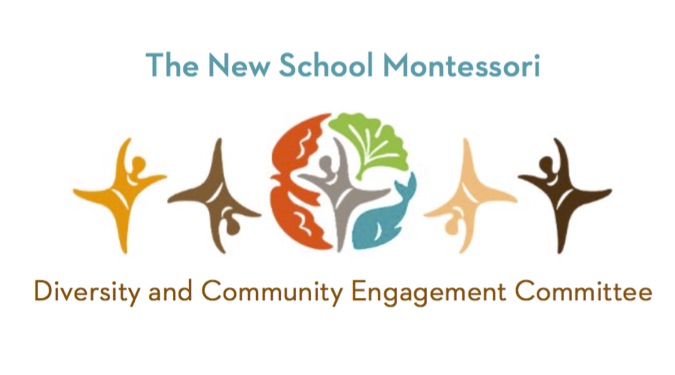This article is written by Hope Miller, TNSM parent and member of the Diversity and Community Engagement Committee (D+CE) and expresses her views. At TNSM, we are grateful to have this D+CE forum that allows opportunities for members of our community to share their own beliefs, always with the goal of expanding our understanding of each other’s experiences and points of view.
March is my happy month. My wife and I had our first date in March—14 years ago. We got married in March—11 years ago. And I was born in March—an undisclosed number of years ago. The weather hints at spring with burgeoning daffodils, longer days, and, if we’re lucky, sunshine and warming temperatures. What’s not to love about this month?
Amid this jubilation, I am saddened. Saddened and outraged by the unrelenting assault on transgender youth and their families. According to legal historian Marie-Amélie George, 2021 was “the most dangerous year for transgender people living in the United States,” and this danger has spilled over into 2022.
Just a couple of weeks ago, the Governor of Texas equated providing gender-affirming treatment to children with child abuse. Currently in committee right now at the Ohio Statehouse is HB 454 (the SAFE Act—“Save Adolescents From Experimentation Act”) which seeks to prohibit medical and mental health professionals from providing gender-affirming care to trans youth.
Stop.
Stop and think about that for a moment.
You could be investigated for child abuse if you support your child in their journey and development by seeking gender-affirming care for them. Child abuse. If you are a provider, you could lose your license or face civil suit for providing this care.
The alternative for not seeking this care for your child? Depression, anxiety, continued gender dysphoria, even suicide. Imagine not being allowed to be who you fundamentally are—this is what happens when fear-based policies and legislation seek to control the movements of people whose difference is perceived as “dangerous.”
As a lesbian of undisclosed age, I’ve seen this all before. It’s the 1-2 punch of the cis-gendered, heteronormative “mainstream” that masquerades as “morality.” “Protect the children!” is the rally cry of this movement and it operates under two faulty—and deadly—premises:
- Queer identity is preventable.
- Queer identity is harmful because it is unnatural and immoral.
Neither of these are true. And yet deep pockets of our culture continue to maintain allegiance to these terminal fictions. While the faulty premises of racism are different from the faulty premises of homophobia/transphobia, the impact is eerily similar: the pain and cultural isolation that comes from being dehumanized in the law, the traumatic experience of being socially and legally “othered” because your identity is deemed somehow “dangerous.”
At the intersection of all these issues (law, race, gender identity, and sexual orientation) sits Pauli Murray, one of the greatest minds of the 20th century and a tireless crusader for human rights.
A Howard-Berkeley-Yale-trained lawyer, Pauli was also the first Black woman* to be ordained as an Episcopal priest. As a law student at Howard, Pauli crafted the legal strategy that Thurgood Marshall and his team eventually used to overturn the “separate but equal” precedent in the landmark civil-rights case, Brown v. Board of Education. They* were pals with Eleanor Roosevelt, a mentor to Ruth Bader Ginsberg, a professor in Ghana and at Brandeis, and an accomplished writer and poet, among so many other things.
In contrast to all these achievements, Pauli faced undue discrimination for being both Black and perceived as female. Denied admission to the University of North Carolina in 1938 because of their race. Arrested in 1940 for refusing to move to the back of a Greyhound bus after it crossed the Mason-Dixon line. Banned from speaking in class their first year at Howard because of their perceived gender. Denied admission to Harvard in 1944 because of their perceived gender (despite having won a fellowship that Howard graduates historically used to go to Harvard). These experiences led Pauli to coin the term “Jane Crow,” a nod to the troubling intersection of race and gender in America.
Privately, the turmoil cut even deeper. Born in 1910 as a woman, Pauli struggled with feelings of gender dysphoria, sensing that although their body is female, they feel male. Pauli endured bouts of depression and periods of psychiatric hospitalization in response to the massive mental and emotional toll of not being able to live freely as their-self. Pauli did find lasting love in their relationship with Irene Barlow; however, given the dominant culture’s fear and disdain of [perceived] same-sex relationships, Pauli and Irene could not be “out.”
While these experiences may not resonate with you or may not be your experiences, let me be clear: this is your cause. It is our cause. Please be an advocate for trans youth and their families, teach your own children about the LGBTQ+ community, and keep working to end race-based violence and prejudice at the individual and societal levels.
In other words, be like Pauli.
To learn more about the experiences of the transgender, non-binary, and queer community, check out this HRC FAQ page. The HRC also maintains an excellent book list.
Learn more about the Rev. Dr. Pauli Murray and watch the documentary about them.
* If Pauli were alive today, Pauli might identify as trans or non-binary. However, the world viewed Pauli as a woman throughout Pauli’s lifetime. In recognition of Pauli’s gender identity, I’ve used “they/them” as Pauli’s pronouns.


Comments 1
How refreshing and informative! Thanks, Hope! May it serve as a call to action for all of us!